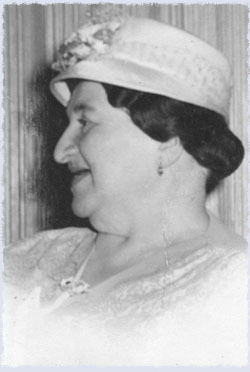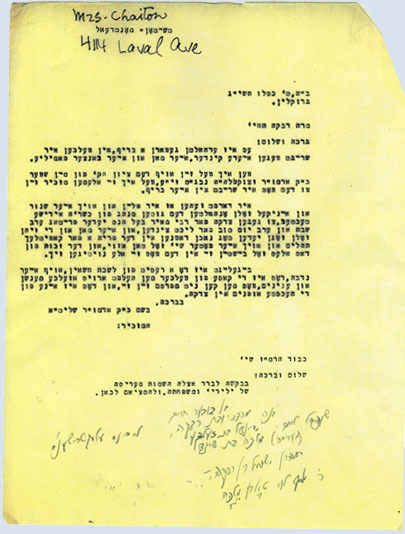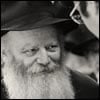
Yosef Levi Shanow arrived in Montreal, Canada, from Warsaw, Poland, in 1900. As a follower of the Gur chassidic dynasty, he received the blessing of his Rebbe, the Sfat Emet, prior to his immigration. He had eight daughters and three sons. Being a religious Jew in Montreal at the time was not an easy task. Yosef Levi, with his flowing beard and the scholarly aura that he radiated, was unique in those years.
At first, Yosef Levi worked as a ritual slaughterer of chickens, until he found out that the store owner he was supplying was claiming that additional chickens were slaughtered by him that were not. From then on, Yosef Levi worked for a men's clothing manufacturer, Freedman and Company.
His eldest daughter, Rivkah Shanow, was my wife's great-grandmother. She married Chaim Dovber Chaiton, the son of a religious educator, Yehoshua Eliezer and Shainah Sarah Chaiton. Rivkah was a G‑d fearing woman known for her extreme kindness. Her husband was a milkman, and Rivkah would make packages of cheese and milk and send them with him to the poor people of the city, free of charge.
Family tradition relates that Rivkah never went to sleep with money in her wallet, always giving every last cent to poor people before the end of the day. She would take people into her house and give them food and shelter. Once, she exchanged shoes with a poor woman—her new shoes for the woman's old ones.

Future generations of the Chaiton family in Montreal followed in the ways of their grandfather, the family's patriarch Yosef Levi Shanow, and sent their children to the Lubavitch schools in Montreal.
Following my brother-in-law Yaakov Glassner's wedding to Chayale Niazov in Montreal, as described in another post, I remained there for another few days for a friend's wedding. As I wrote, during that time I was given the opportunity to look through the letters the Rebbe wrote to Rabbi Zev Greenglass. The Rebbe, of righteous memory, would at times send copies of letters he wrote to other community members to Rabbi Greenglass, so that he could follow up if necessary.
Looking through the letters, I noticed a letter written in the Rebbe's handwriting, in English, to Mrs. Chaiton, 4114 Laval Ave! It turns out that the letter was written to Rivkah Chaiton! The letter contained instructions to her, her daughter-in-law Shaindel (my wife's grandmother), her son Mottel (my wife's grandfather), their children, and her father, Yosef Levi.
The letter was sent to Rabbi Greenglass for him to find out the names of all the family members (so that the Rebbe could bring their names to his father-in-law, the Rebbe's predecessor, Rabbi Yosef Yitzchak, of righteous memory's, resting place).
The gist of the letter was that the girls of the family should give charity for the cause of needy families in Israel (Colel Chabad) before lighting the Shabbat and holiday candles, and the sons of the family should says chapters of Psalms after their morning prayers.
No one in the family had known about the letter until I read it to the entire family at one of the seven festive meals ("Sheva Brachot") following the Glassner-Niazov wedding, and I presented a copy of the letter to the new bride.






